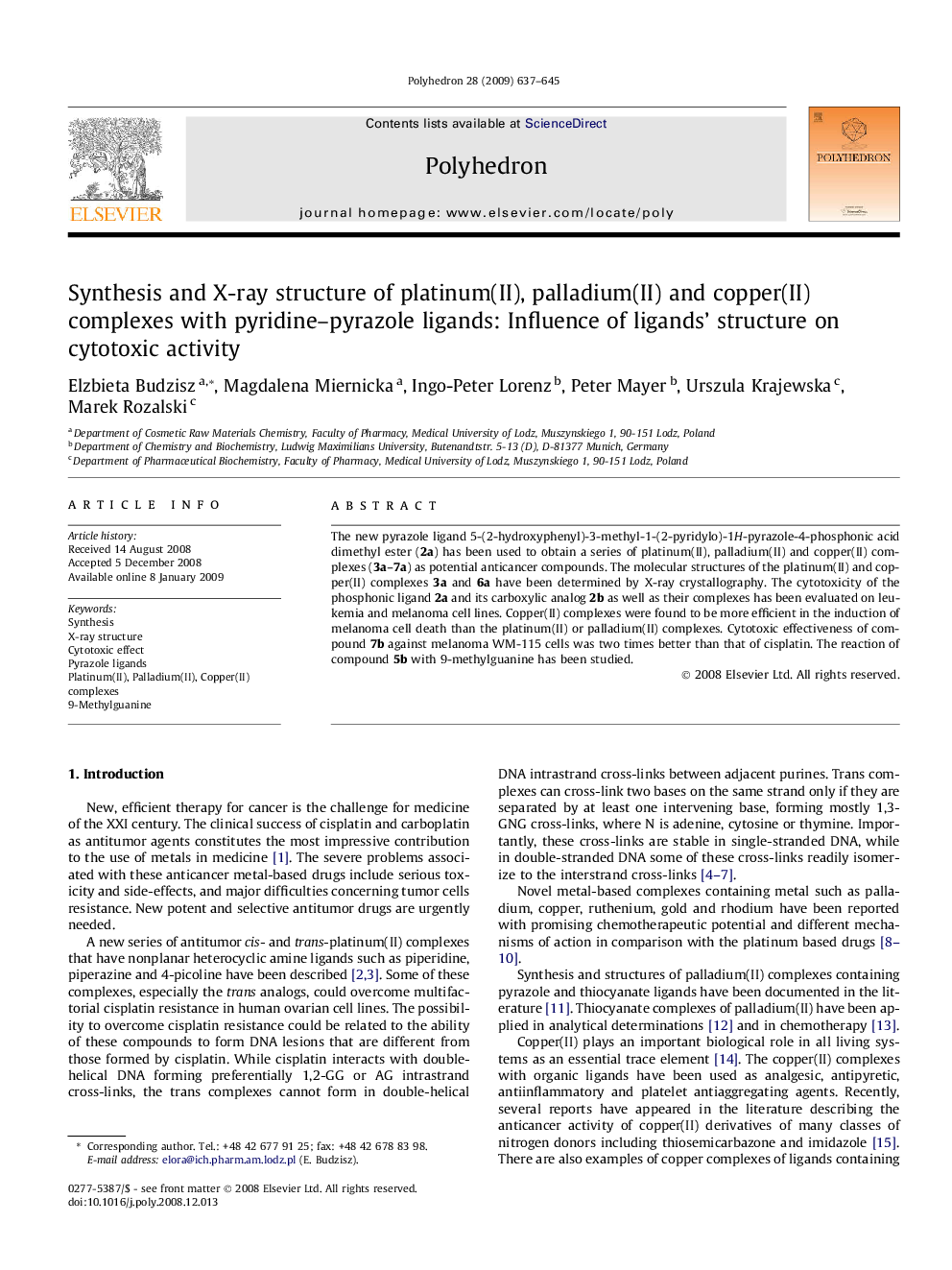| Article ID | Journal | Published Year | Pages | File Type |
|---|---|---|---|---|
| 1335116 | Polyhedron | 2009 | 9 Pages |
The new pyrazole ligand 5-(2-hydroxyphenyl)-3-methyl-1-(2-pyridylo)-1H-pyrazole-4-phosphonic acid dimethyl ester (2a) has been used to obtain a series of platinum(II), palladium(II) and copper(II) complexes (3a–7a) as potential anticancer compounds. The molecular structures of the platinum(II) and copper(II) complexes 3a and 6a have been determined by X-ray crystallography. The cytotoxicity of the phosphonic ligand 2a and its carboxylic analog 2b as well as their complexes has been evaluated on leukemia and melanoma cell lines. Copper(II) complexes were found to be more efficient in the induction of melanoma cell death than the platinum(II) or palladium(II) complexes. Cytotoxic effectiveness of compound 7b against melanoma WM-115 cells was two times better than that of cisplatin. The reaction of compound 5b with 9-methylguanine has been studied.
Graphical abstractThe new phosphonic pyrazole ligand has been used to obtain a series of platinum(II), palladium(II) and copper(II) complexes as potential anticancer compounds. The molecular structures of the platinum(II) and copper(II) complexes have been determined by X-ray crystallography. The cytotoxicity of the phosphonic ligand and its carboxylic analog as well as their complexes has been evaluated on leukemia and melanoma cell lines. Copper(II) complexes were found to be the most efficient. Cytotoxic effectiveness of one of copper(II) against melanoma WM-115 cells was two times better than that of cisplatin.Figure optionsDownload full-size imageDownload as PowerPoint slide
